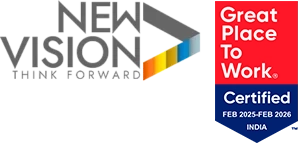
What does software testing imply for an economy that is software driven and in a market where all other business has become secondary to the business of software.
Ever wondered whether how a coder sitting in a remote corner of the world could cause a disaster in another part of the world. Or how hundreds of government employees can get the wrong prison sentence due to a software glitch.
Sounds like fiction. But this has been playing out time and again because software is used in everything, including mission-critical deployments such as military and commercial airplanes and government operations. In 2015 a software glitch caused Airbus 400 to crash in Seville during a test flight killing four of the six crew members, just as two lethal Boeing Max 737 crashes were due to software glitches. The British Post Office scandal due to a software glitch led to the prosecution of thousands of subpostmasters, wrong convictions, financial ruin, death, and suicide. The accounting software was implemented across 19,000 post offices in the UK and the scale of damage forced the technology vendor to tender a public apology.
In a software-driven world, software testing services have become front and center as every company tries to distinguish itself with digital capabilities and must think like a software company. Testing is sacred for software companies and the cost of not testing enough is death, disaster, financial loss and even, business closure.
The biannual report of the Consortium of Information and Software Quality in 2022 estimates that the cost of poor software quality in the US has grown to at least $2.41 trillion and the accumulated software Technical Debt (TD) has grown to approximately $1.52 trillion. The report states that loss from cyber crimes due to existing vulnerabilities in software has jumped up significantly, and problems in software supply chain with underlying third-party components, particularly open-source software, is a grim challenge.
Business Excellence with Software-enabled Value Creation
According to McKinsey research, nearly 70% of top business performers use their own software for differentiation, and one-third of these top performers monetize their software directly. The success of digital transformation is marked by high availability and good customer experience of the application. This is the only way to create business impact and it has a direct co-relation with the bottomline.
To achieve digital excellence, organizations must start embedding agile practices in an organizational culture wherein teams are encouraged to collaborate in an empowered environment. Teams organized around user journeys can create products autonomously and ensure continuous improvement. At the same time business are supported with technology enablement to deliver improvements with a continuous integration (CI) and continuous delivery (CD) pipeline and automated software testing.
McKinsey framework for digital excellence highlights CICD alongside automated testing as an essential building block. Automated testing significantly reduces the time needed to prepare code for production, while CI ensures that the software remains in a functional state by promptly identifying and addressing any failures. This synergy between continuous and automated testing is vital to ensure the reliability and efficiency of business applications and deliver high-quality software consistently and swiftly.
Operationalizing Software Quality Assurance and Testing
Continuous testing before production helps to identify and fix bugs promptly. After software launch bugs become more costly to fix, requiring extensive hours of labour to painstakingly identify and fix it. Not to mention the increased downtime, and reduced productivity of developers to devote time for more important things. Fixing bugs early during testing is 80-100 times cheaper and 50 times faster than addressing them after product launch. Implementing processes that allow developers to detect defects early and often is crucial.
Development and QA testing teams must work together closely. However, QA is complex and requires a dedicated team, and outsourcing QA helps businesses allocate resources more effectively while ensuring superior quality assurance. NewVision’s software quality assurance services empower businesses by protecting revenue, maximizing ROI, and preventing costly mistakes. As a software testing company, NewVision has enhanced QA processes for global corporations, strengthening trust in software-led operations.
If you want to know more about QA testing services or how to elevate your digital foray with Software Quality Testing services, write to us at contact@newvision-software.com

